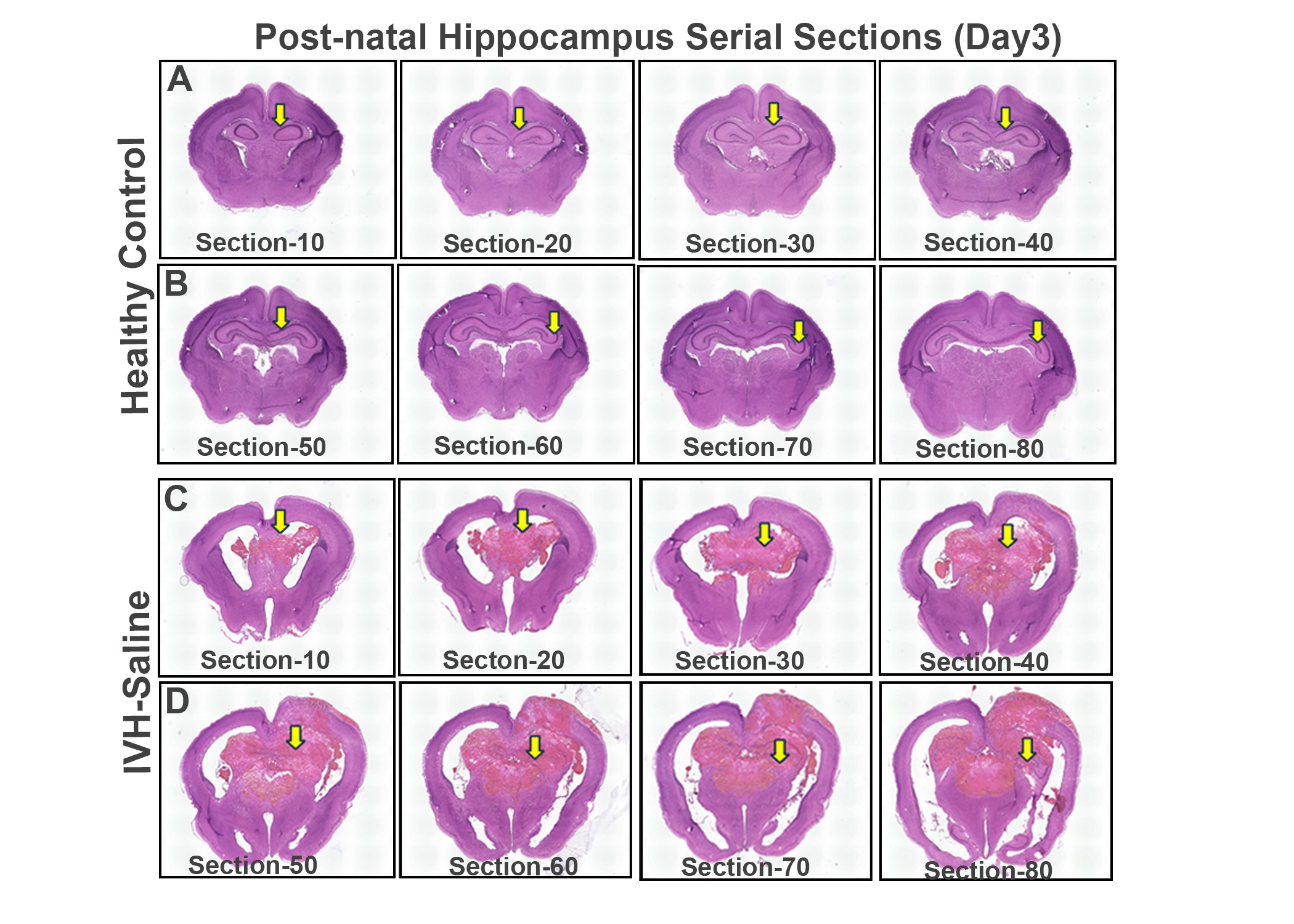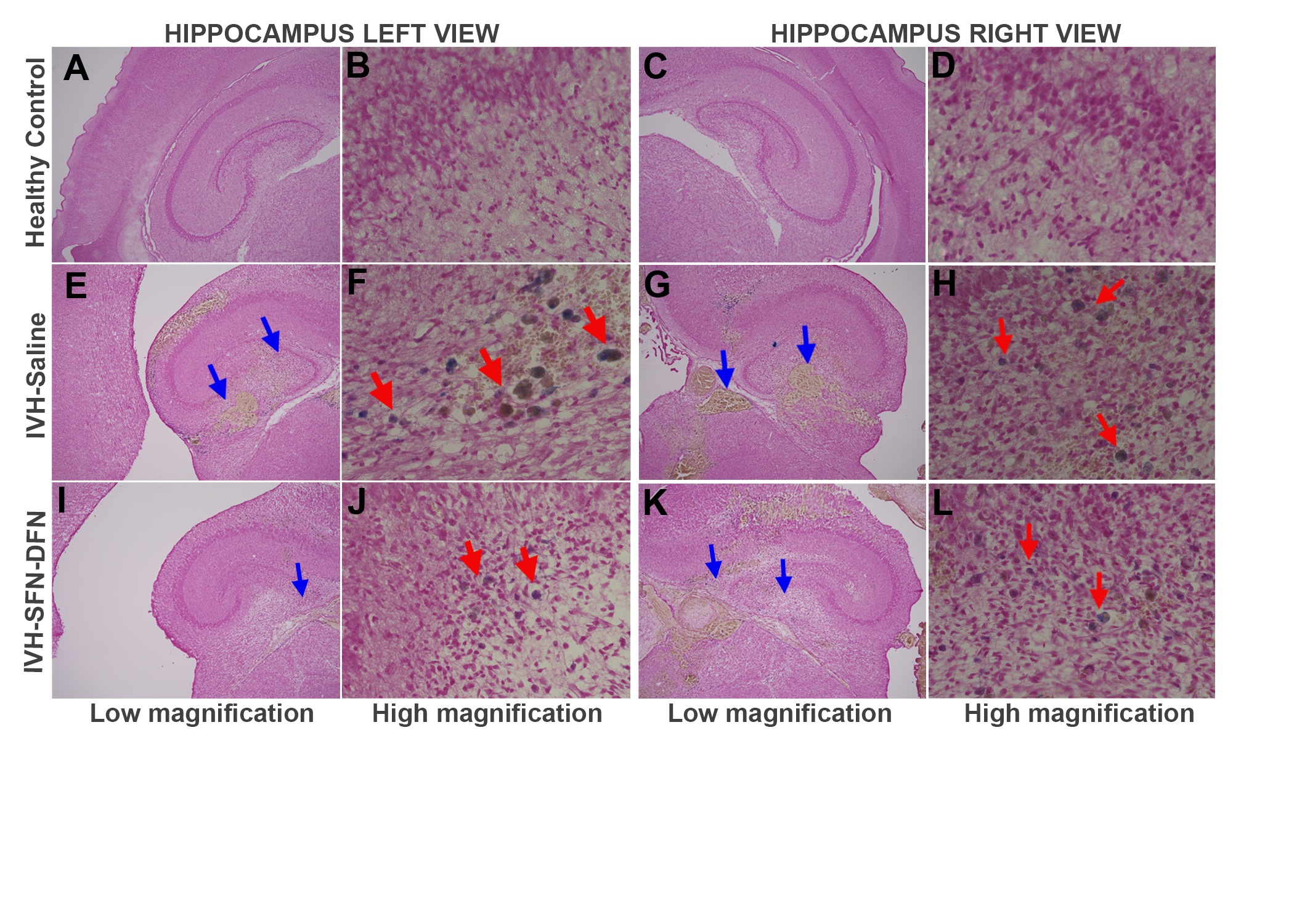Neonatal Neurology 7: Pre-Clinical 1
Session: Neonatal Neurology 7: Pre-Clinical 1
015 - Combined sulforaphane and deferoxamine suppress neuroinflammation during postnatal hippocampal formation after intraventricular hemorrhage (IVH)
Monday, April 28, 2025
7:00am - 9:15am HST
Publication Number: 15.4125
Michelle A. Sunshine, Maria Fareri Children's Hospital at Westchester Medical Center, Dobbs Ferry, NY, United States; Vanessa Castro Diaz, Maria Fareri Children's Hospital at Westchester Medical Center, fort Lee, NY, United States; Furong Hu, Boston Children's Hospital, Valhalla, NY, United States; Sohan S. Shah, New York Medical College, Syosset, NY, United States; Govindaiah Vinukonda, New York Medical College, Valhalla, NY, United States; Edmund F.. LaGamma, New York Medical College, Valhalla, NY, United States

Michelle A. Sunshine, MD (she/her/hers)
Neonatology Fellow
Maria Fareri Children's Hospital at Westchester Medical Center
Dobbs Ferry, New York, United States
Presenting Author(s)
Background: IVH is a common complication of prematurity, resulting in reduced neurogenesis, cortical atrophy, and subsequent cerebral palsy, learning & memory disabilities. Survivors of Grade III-IV IVH show smaller hippocampal volumes on MRI with impaired function. Hematomas can concurrently occur in the hippocampus due to its position in the inferior temporal horn of the lateral ventricle and its immature blood vessels. We evaluated hemorrhagic hematoma accumulation, ensuing RBC lysis-released toxicants (free HgB and Fe2+/3+) in the hippocampus & the effects of treatment with deferoxamine (DFN; iron chelator) + sulforaphane (SFN; Nrf2, an anti-inflammatory transcription factor activator) during postnatal hippocampal development.
Objective: We hypothesize that following IVH, the RBC lysis-released toxic mediators will induce neuroinflammation & interrupt postnatal hippocampal formation whereas SFN-DFN treatment will reduce inflammation enhancing the likelihood of its satisfactory recovery.
Design/Methods: We used our premature rabbit model of glycerol-induced IVH with ultrasound confirmed severity of IVH (Vinukonda et al. 2019). IVH pups were assessed for hippocampal hematoma accumulation using coronal serial sections by H&E staining & immunofluorescence. Treated groups received SFN+DFN (SFN 25mg/Kg IP QD + DFN 50mg/Kg SQ BID for 3 days), compared with vehicle or no IVH controls.
Results: At day 3 postnatal age, IVH pups showed reduced hippocampal volume & tissue disruption in the dentate gyrus (DG) and hilus with hematoma accumulation compared to no IVH controls (n=6/grp, Fig 1). Hippocampal tissue iron accumulation increased two-fold compared to controls (p < 0.01); whereas combined drug treatment re-established iron homeostasis by decreasing Fe2+/3+ to control levels (p < 0.05, n=5/grp for both). Histologically iron accumulation is found in the DG, hilus and CA3 subregions (n=5/grp, Fig 2). Cell density studies showed 60% reduced infiltrating Iba-1 & 53% reduced TUNEL positive apoptotic cells after combined drug treatment + IVH vs vehicle treated + IVH pups (p < 0.05 for both, n=5/grp).
Conclusion(s): IVH results in increased hippocampal free HgB, Fe2+/3+, microglia, & apoptosis where effects were attenuated after combined SFN-DFN treatment. We speculate that a strategy of combined & targeted pharmacological interventions is preferred to address this complex injury paradigm at multiple levels to synergistically reduce hippocampal damage after IVH. Less injury may enhance the beneficial effects of “living therapy” using stem cells. Additional, comparisons of 7 day endpoints are underway.
Figure 1 - Day 3 Hippocampal Serial Sections for Healthy Control vs Vehicle Treated + IVH Groups
 Hippocampal serial sections anterior to posterior for control vs vehicle treated + IVH groups showing parenchymal blood after IVH, tissue distortion and enlarged ventricles with arrows comparing similar regions.
Hippocampal serial sections anterior to posterior for control vs vehicle treated + IVH groups showing parenchymal blood after IVH, tissue distortion and enlarged ventricles with arrows comparing similar regions. Figure 2 - Day 3 Hippocampal H&E Slides of Iron Deposition for Healthy Control vs Vehicle Treated + IVH vs IVH + SFN-DFN Treatment Groups
 Iron deposition (arrows) in the hippocampus subregions for healthy control vs vehicle treated + IVH vs IVH + SFN-DFN treatment groups showing fewer positive cells (red arrows) after treatment (4x & 20x).
Iron deposition (arrows) in the hippocampus subregions for healthy control vs vehicle treated + IVH vs IVH + SFN-DFN treatment groups showing fewer positive cells (red arrows) after treatment (4x & 20x).Figure 1 - Day 3 Hippocampal Serial Sections for Healthy Control vs Vehicle Treated + IVH Groups
 Hippocampal serial sections anterior to posterior for control vs vehicle treated + IVH groups showing parenchymal blood after IVH, tissue distortion and enlarged ventricles with arrows comparing similar regions.
Hippocampal serial sections anterior to posterior for control vs vehicle treated + IVH groups showing parenchymal blood after IVH, tissue distortion and enlarged ventricles with arrows comparing similar regions. Figure 2 - Day 3 Hippocampal H&E Slides of Iron Deposition for Healthy Control vs Vehicle Treated + IVH vs IVH + SFN-DFN Treatment Groups
 Iron deposition (arrows) in the hippocampus subregions for healthy control vs vehicle treated + IVH vs IVH + SFN-DFN treatment groups showing fewer positive cells (red arrows) after treatment (4x & 20x).
Iron deposition (arrows) in the hippocampus subregions for healthy control vs vehicle treated + IVH vs IVH + SFN-DFN treatment groups showing fewer positive cells (red arrows) after treatment (4x & 20x).
